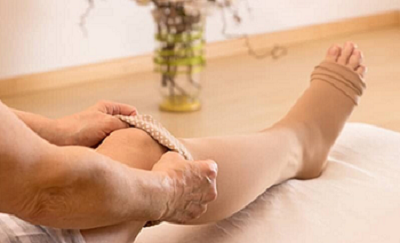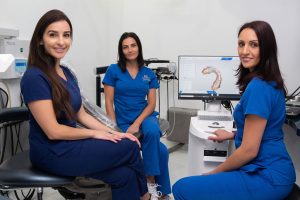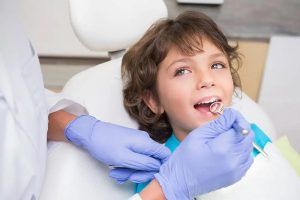Why Should You Consider Varicose Vein Treatment?
6 min read
Varicose veins are enlarged, twisted veins that often appear blue or dark purple. They occur when the valves in the veins do not function properly, causing blood to flow backward and pool, leading to the swollen appearance. Most commonly found in the legs, varicose veins can cause discomfort, pain, and more serious health issues if left untreated.
Symptoms and Complications
Symptoms of varicose veins include aching pain, throbbing, swelling, and heaviness in the legs. In severe cases, varicose veins can lead to complications such as ulcers, blood clots, and bleeding. These symptoms not only affect physical health but can also impact one’s quality of life, making it difficult to engage in daily activities.
What Causes Varicose Veins?
Several factors contribute to the development of varicose veins. Genetics plays a significant role, meaning if your family members have varicose veins, you are more likely to develop them. Other contributing factors include age, gender (women are more prone than men), obesity, pregnancy, and prolonged standing or sitting.
Types of Varicose Vein Treatments
There are several treatments available for varicose veins, each with its advantages. These treatments range from lifestyle changes and compression stockings to minimally invasive procedures and surgery.
Lifestyle Changes and Self-Care
Simple lifestyle changes can help manage the symptoms of varicose veins. Regular exercise, maintaining a healthy weight, elevating the legs, and avoiding long periods of standing or sitting can alleviate symptoms. Wearing compression stockings also helps by applying pressure to the legs, promoting blood flow and reducing swelling.
Sclerotherapy
Sclerotherapy involves injecting a solution into the varicose veins, causing them to collapse and fade over time. This procedure is effective for small to medium-sized varicose veins and spider veins. It is minimally invasive, requires no anesthesia, and has a short recovery period.
Endovenous Laser Treatment (EVLT)
Endovenous Laser Treatment (EVLT) uses laser energy to heat and seal the affected vein. A small laser fiber is inserted into the vein through a catheter, and the laser is activated, causing the vein to close. EVLT is effective for larger varicose veins and is performed under local anesthesia. Recovery is quick, with most patients resuming normal activities within a few days.
Radiofrequency Ablation (RFA)
Radiofrequency Ablation (RFA) is similar to EVLT but uses radiofrequency energy instead of laser energy to heat and close the vein. This minimally invasive procedure is effective for large varicose veins and has a high success rate. Patients typically experience minimal discomfort and can return to their daily routines quickly.
Ambulatory Phlebectomy
Ambulatory phlebectomy involves removing small varicose veins through tiny incisions in the skin. This procedure is performed under local anesthesia and is ideal for treating surface veins. It provides immediate results with minimal scarring and a short recovery time.
Vein Stripping and Ligation
Vein stripping and ligation is a surgical procedure that involves tying off and removing the affected veins through small incisions. This method is usually reserved for severe cases of varicose veins that do not respond to other treatments. While it is more invasive than other options, it can provide long-lasting relief from symptoms.
Advantages of Varicose Vein Treatment
Treating varicose veins offers numerous benefits beyond improving the appearance of your legs. Here are some key advantages:
Improved Symptoms
Does varicose vein treatment can significantly reduce or eliminate the symptoms associated with varicose veins, such as pain, swelling, and heaviness. This improvement can enhance your overall quality of life and allow you to participate in activities you may have avoided due to discomfort.
Preventing Complications
Left untreated, varicose veins can lead to serious complications, including skin ulcers, blood clots, and bleeding. Treating varicose veins can help prevent these issues and maintain your vascular health.
Enhanced Appearance
One of the most noticeable benefits of varicose vein treatment is the improvement in the appearance of your legs. Many people feel self-conscious about their varicose veins and avoid wearing certain clothing. Treatment can restore confidence and allow you to wear what you like without worrying about your legs’ appearance.
Increased Mobility
Pain and discomfort from varicose veins can limit your mobility and make it challenging to stay active. Treating varicose veins can alleviate these symptoms, making it easier to move around and engage in physical activities, which is essential for overall health and well-being.
Boosted Self-Confidence
Living with varicose veins can impact your self-esteem, especially if you feel self-conscious about your appearance. Successful treatment can boost your confidence, allowing you to feel better about yourself and your body.
Does Varicose Vein Treatment Work?
The effectiveness of varicose vein treatment depends on the method used and the severity of the condition. Here’s a closer look at the success rates and outcomes of different treatments:
Sclerotherapy
Sclerotherapy is highly effective for small to medium-sized varicose veins and spider veins. Studies show that it has a success rate of 60% to 80%, with most patients experiencing significant improvement in symptoms and appearance. Multiple sessions may be required for optimal results.
Endovenous Laser Treatment (EVLT)
EVLT boasts a success rate of 95% or higher for treating larger varicose veins. Most patients experience relief from symptoms and noticeable improvement in the appearance of their legs. The procedure is minimally invasive, with a low risk of complications and a quick recovery time.
Radiofrequency Ablation (RFA)
RFA has a success rate similar to EVLT, with around 95% of patients achieving positive results. It is highly effective for large varicose veins, offering symptom relief and cosmetic improvement. The minimally invasive nature of the procedure ensures a speedy recovery.
Ambulatory Phlebectomy
Ambulatory phlebectomy is effective for removing surface varicose veins, with success rates exceeding 90%. The procedure provides immediate results with minimal scarring and a short recovery period. Patients report high satisfaction with both the functional and aesthetic outcomes.
Vein Stripping and Ligation
Vein stripping and ligation have a success rate of around 80% to 90%, making it a reliable option for severe varicose veins. However, it is more invasive than other treatments, requiring a longer recovery period. Despite this, many patients experience long-term relief from symptoms and a significant improvement in leg appearance.
Choosing the Right Treatment
Selecting the appropriate varicose vein treatment depends on several factors, including the size and severity of your varicose veins, your overall health, and your personal preferences. Consulting with a vein specialist is crucial to determine the best treatment plan for your specific condition.
Finding a Vein Specialist
When seeking varicose vein treatment, it’s essential to choose a qualified and experienced vein specialist. Look for a physician who is board-certified in vascular medicine or a related field and has extensive experience in treating varicose veins. Reading reviews and asking for recommendations can also help you find a reputable specialist.
Preparing for Your Consultation
Before your consultation, prepare a list of questions to ask your vein specialist. These may include:
- What are my treatment options?
- What are the risks and benefits of each treatment?
- How many treatments will I need?
- What is the recovery process like?
- Will my insurance cover the treatment?
Post-Treatment Care
After undergoing varicose vein treatment, following your doctor’s post-care instructions is crucial to ensure optimal results and prevent recurrence. These instructions may include wearing compression stockings, avoiding strenuous activities, and elevating your legs.
Conclusion:
Treating varicose veins offers numerous advantages, from relieving pain and discomfort to improving the appearance of your legs and boosting your self-confidence. With various effective treatment options available, you can find a solution that suits your needs and lifestyle. By consulting with a vein specialist and choosing the right treatment, you can enjoy healthier, more attractive legs and a better quality of life.


